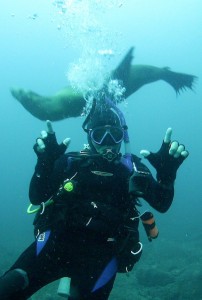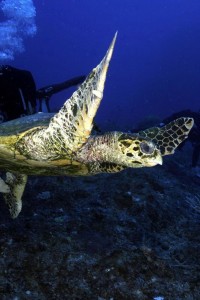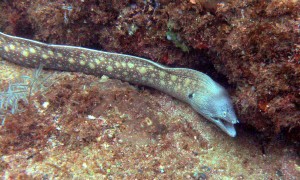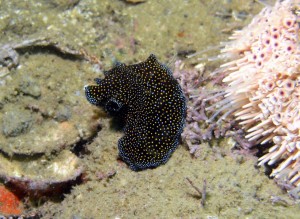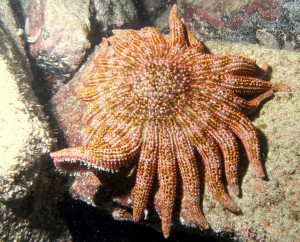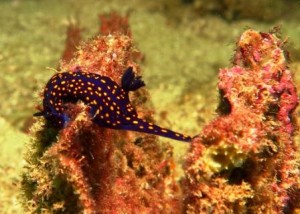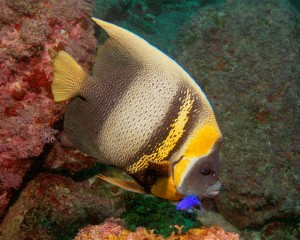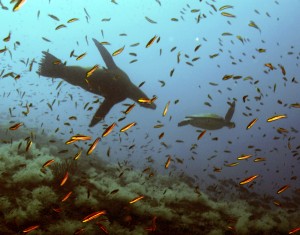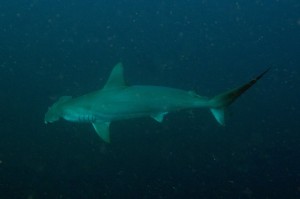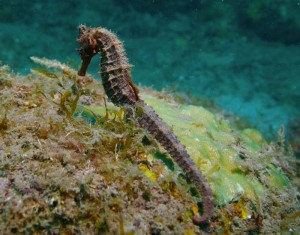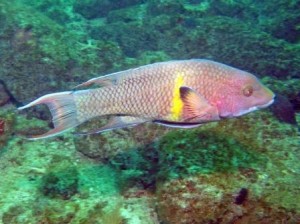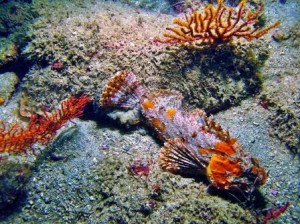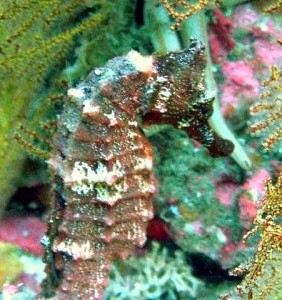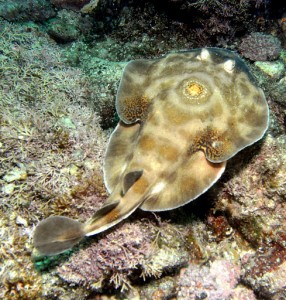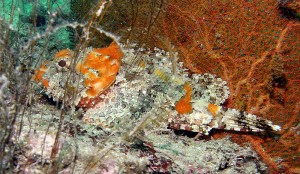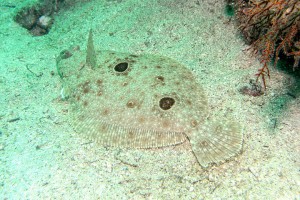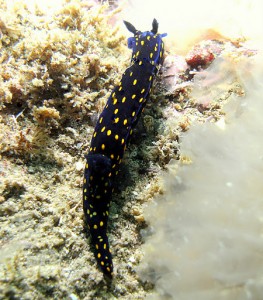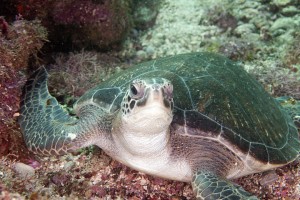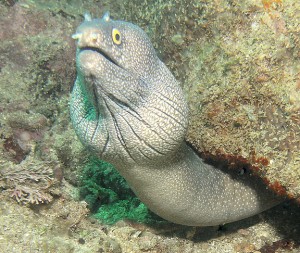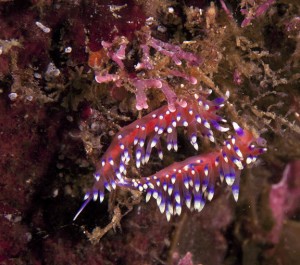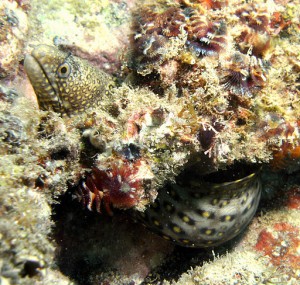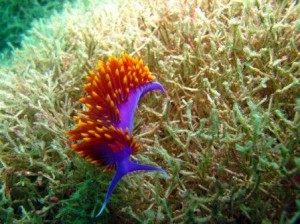Scuba diving San Carlos Mexico: you’ve got to “sea” it to believe it.
San Carlos Mexico has great diving in the Sea of Cortez. The Sea of Cortez is recognized as having one of the greatest varieties and diversity of marine life in the world. Jacques Cousteau famously called it “the world’s aquarium”.
In a boat ride to a dive site and during a dive, you can see sea lions, dolphins, whales, mobula rays, lobster, octopus, sea horses, turtles, barracuda, nudibranchs, sea hares, moray eels, puffers, damselfish, rockfish and angelfish (cortez and king). You might even get lucky and encounter a hammerhead shark or whale shark.
It is important to keep the gills wet and San Carlos is the perfect place to do it. Scroll down for dive locations, yearly water temps, video, and reports with photos.
Before you head out, check the weather.
Be sure to visit your favorite local dive shop for assistance and information on diving around San Carlos.
San Carlos Dive Map
Where to dive?
- San Pedro Island has several great dive spots, varying in depth and what you can see. The Lighthouse is always popular and a good place to dive with sealions. The lighthouse also has a short tunnel that’s filled with fish. The sealions are always a highlight of any trip to the Island — they’ll swoop down to swim through your bubbles or twirl in front of your mask. There’s also usually a huge number and variety of tropical fish, like colorful king angel, scissor tails, sergeant major, parrot fish, red snapper, soap fish and butterfly fish. Head to the South Point to try to find the Hammerheads.
- The Aquarium (Martini Cove). A local favorite for diving, snorkeling, kayaking and swimming. There’s so much diversity of marine life, it’s like being in an aquarium. And, it’s only a 5 minute boat ride or short paddle from the marina.
- Santos & Suchiate sunken boats. Near Eagle Rock, and around the corner from Martini Cove – it’s an easy boat ride from either marina. More boats are being added to this Marina park – as of April 2025, there are 4 boats. More info
- Catalina. This is a great local dive sites due to its ease of access and diverse terrain and life.
- Piedras Pintas (Lalos Cove). You can do some nice shore diving here.
- Isla Venado (Deer Island)
- Window Rock. There a really fun swim through here that’s full of sealife.
- Eagle Rock
- Tres Marias
- San Nicolas
- Seamount. Located just outside the entrance to Marina San Carlos, this site is not often dove due to its exposed location. Depths range from 30 feet on top to below 100 feet, and currents can be tricky. Descending to 40 feet, you’ll start to see colonies of Yellow polyp black coral anchored to the rock. Interspersed among the coral were large red and yellow sea fans and colonies of colorful gorgonians. Large, splendid Cortez angelfish added motion along with the shrimp and long-nosed Hawk fish which live amongst the coral branches.
- San Antonio Point. The topography is unique and it always seems to offer up something new and different. During the summer months we’ve seen everything here from sea horses to whale sharks. Descend to 20 feet, and follow the reef out into deeper water. You’ll find lots of big eels hiding in the rocks.
When to Dive: Yearly Water Temps
- In December, the temps are around 60 F and you’ll probably want to be using 7 mil suits and hoods and booties. By April, it’s only warmed to mid 60’s F. During the winter months, the boat rides are great though with dolphins, whales (including whale sharks and orcas) and mobula rays entertaining throughout the journey. When the water is cold, big crabs come to the shallow water, it’s also a good time to find nudibranchs. You’re more likely to be diving in sargassum seaweed with lower visibility during this time of year.
- By June, surface temps have warmed to the 80’s F … as you go deeper, it will drop a bit. Other than if you hit a chilly thermocline, the temperatures will stay warm to hot through October.
- In November, the water starts cooling again. In places like Martini Cove, it can be in the high 70’s F at the surface, but go to the low 70’s at 50 feet. At San Pedro Island, it can be several degrees cooler. You’ll probably want at least 3mm by now.
Diving in San Carlos Video
Diving San Carlos Photos
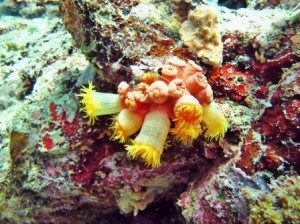

Guineafowl puffer

Guineafowl puffer



Lobster

Cortez Angel
There is lots to see (but you can’t see it from the couch), so come on down and try diving San Carlos Mexico.










